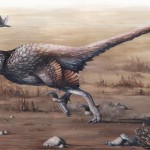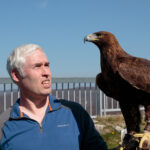How I got into science blogging
Blogger and photographer Steven Spence explains how he got started in science blogging and amateur science communication.
How in the world did I wind up in science communication? Curiosity and a determination to share original work on social media.
“In its encounter with Nature, science invariably elicits a sense of reverence and awe. The very act of understanding is a celebration of joining, merging, even if on a very modest scale, with the magnificence of the Cosmos.” —Carl Sagan
Curiosity takes you places
Some years ago, I was bored with what I saw on Facebook. It seemed like people just shared the same tired jokes, memes, and political and religious posts over and over. Along came Google+ with an interest-based approach, in contrast to Facebook’s model focused on family, friends, and coworkers. Google+ had an adequate markup language for formatting posts and good tools for sharing photos. I resolved to post something original each week.
I would take photos of insects or wildlife, do some basic write-up, and voilà—there was my post for the day. As I became comfortable with the approach, I spent more time reading about my subjects. A side effect was that writing became easier for me. I was “discovered” because of a post I wrote about bees in the wintertime. Kate Stone, CEO of Science Connected and editor in chief of the digital magazine, came across my post and asked me if I wanted to try out a few photo essays. I wondered what she wanted me to write about, and Kate said, “Whatever interests you because that’s where you’ll shine.” Little did either of us know how this would blossom.
“We live in a society exquisitely dependent on science and technology, in which hardly anyone knows anything about science and technology.” —Carl Sagan
RELATED: Why am I writing a science blog?
Science Blogging: Growing as a writer
Kate’s laissez-faire approach to my contributions, coupled with my innate curiosity, took me many directions: sometimes toward insects, sometimes birds, sometimes dinosaurs. Along the way, Kate and the copy editors coached me, encouraged me, and made everything I wrote better. There is a tremendous benefit in having a professional editor.
Although I’m an introvert, writing revealed a side of me that I didn’t know I had. I have surprised myself by contacting museum administrators, scientists, artists, authors, and other photographers, as well as establishing relationships with two major publishing houses. In the meantime, Google recognized me as one of 700 “content creators,” gave me a verified account, and now promotes my Science and Nature collection, which had over 200,000 followers. None of this was planned. It happened because of curiosity, motivation, a great team, and continuity.
“Not explaining science seems to me perverse. When you’re in love, you want to tell the world.” —Carl Sagan
Science Connected doesn’t emulate professional journals for scientists. Nor do we want to churn out the same information as everyone else. You’ve probably seen the news full of very similar stories shortly after scientists make an announcement. Usually, media members are racing to get the story out. They rely heavily on predigested press kits. Science Connected writers dig deeper by reading the original papers and associated research, formulating the information in their own words for a general audience, and investigating aspects that writers racing to get the news out simply don’t have time to explore.
Another opportunity—how I got my start in science communication—is through photography and experiences in nature. Love to scuba dive? Those photos of a reef might be an excellent fit for an article. Backpacking in Canada? Are you a backyard beekeeper? Do you photograph butterflies? If you are knowledgeable about nature and the environment, or if you are a subject matter expert in a scientific field, you can share your insights with readers online.
“Our species needs, and deserves, a citizenry with minds wide awake and a basic understanding of how the world works.” —Carl Sagan
Featured image: Red Fox (Vulpes vulpes) at Wildpark Bad Mergentheim. Photo by author.




